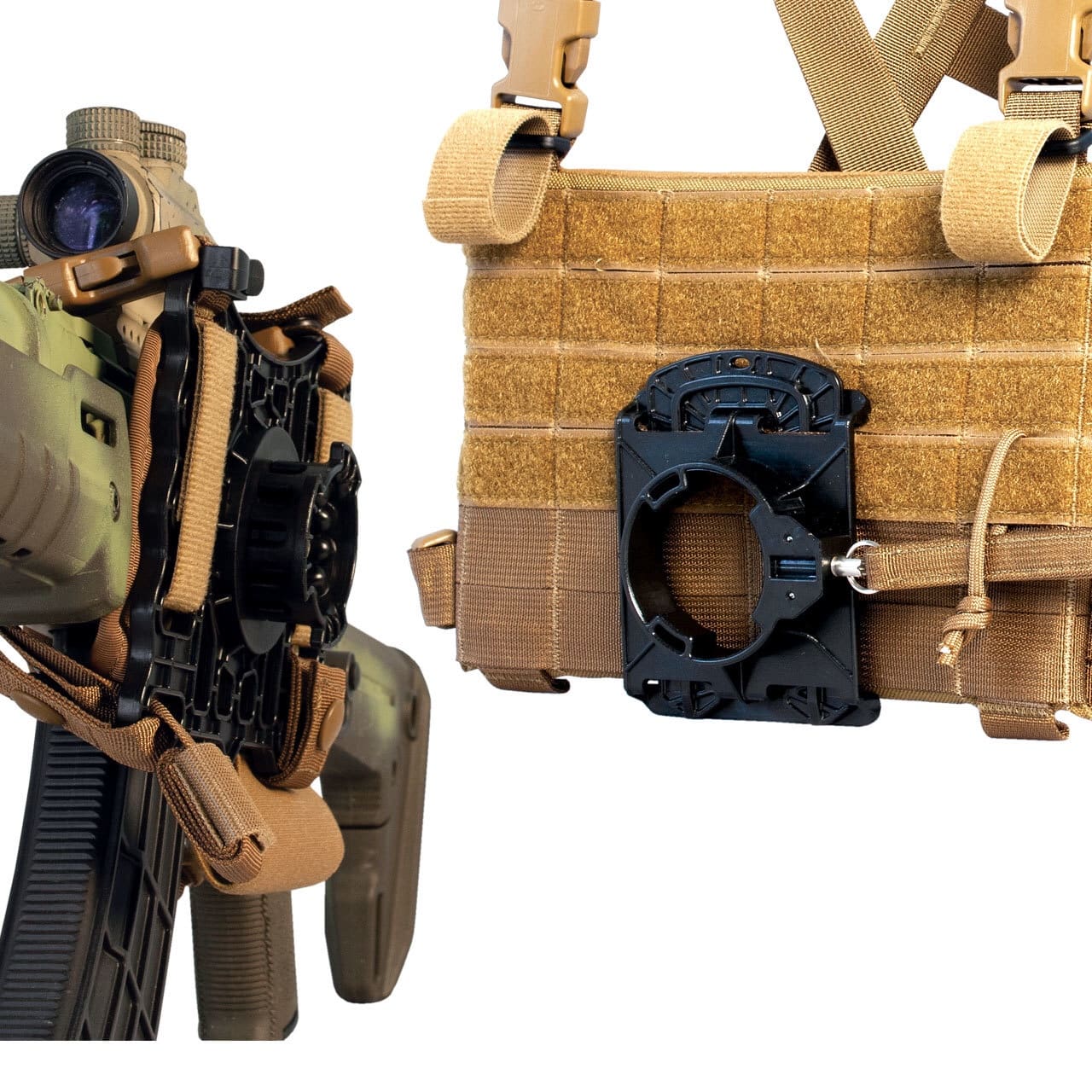
United States Tactical has released a video showcasing their Elite Retention System. It’s a two-piece system that keeps the weapon at the ready, but your hands free.

Scene from a park in Taipei.
Thanks Grzegorz!
Almost two years ago, United States Special Operations Command launched Family of Tactical Headborne Systems (FTHS), the search for Commerical-Off-The-Shelf Special Operations Forces Personal Equipment Advanced Requirements (SPEAR) Ballistic and Non-Ballistic Helmets.
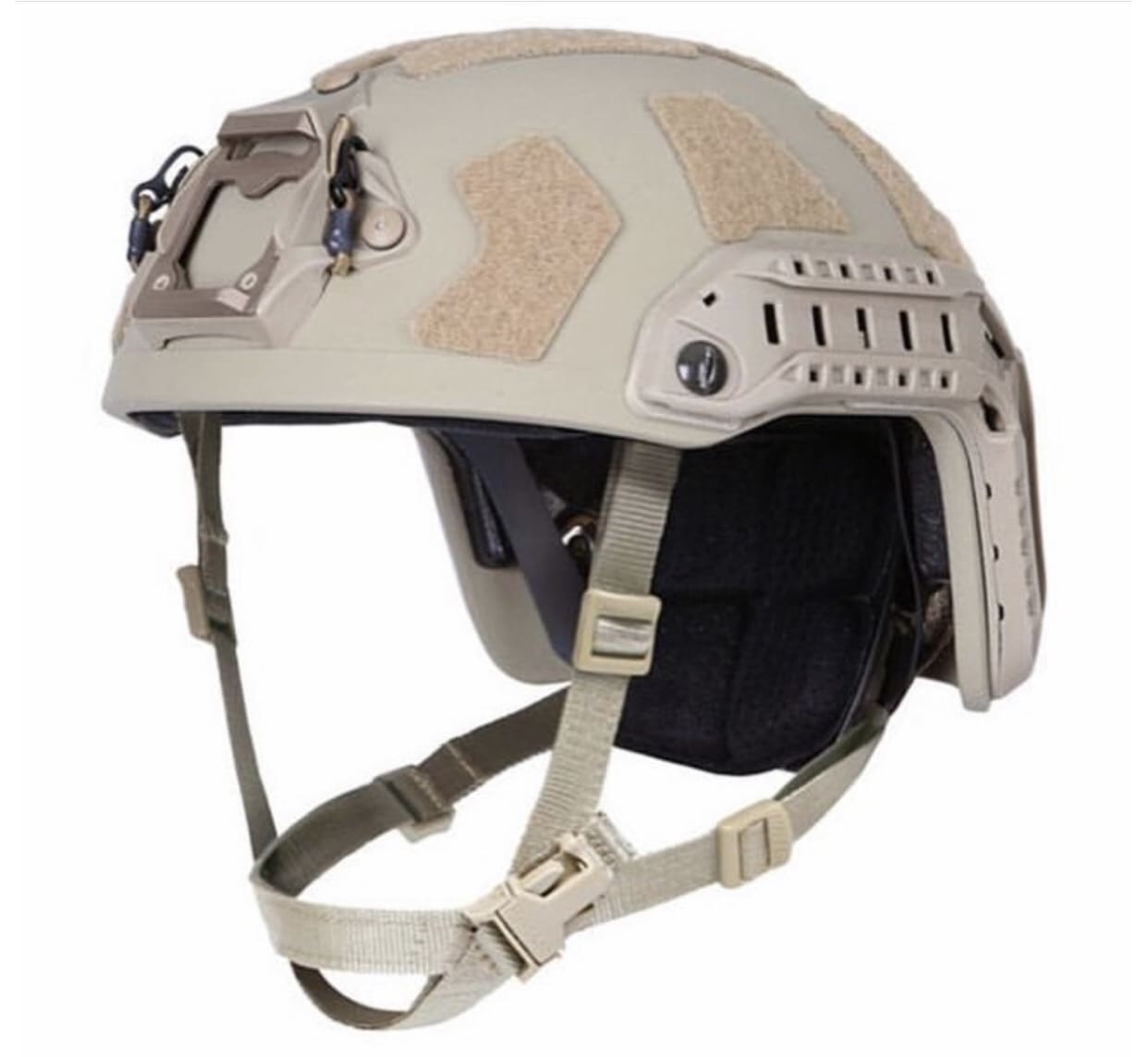
Now, they have announced that they have awarded a $95,000,000 IDIQ contract to Ops-Core parent company Gentex after selecting the FAST SF as the new helmet for special operators.
Gentex Corp., Simpson, Pennsylvania, was awarded a $95,000,000 maximum, indefinite-delivery/indefinite-quantity, firm-fixed-price contract (H92403-19-D-0003) for the purchase of Special Operations Forces Personal Equipment Advance Requirements (SPEAR) family tactical headborne systems in support of U.S. Special Operations Command (USSOCOM). Fiscal 2019 operations and maintenance funds in the amount of $150,000 were obligated at the time of award. The work will be performed in Simpson, Pennsylvania. Work is expected to be completed by April 2024. This contract was awarded through full and open competition with two proposals received. USSOCOM, Tampa, Florida, is the contracting activity.
This signifies a double win for Gentex. Their was recently selected by SOCOM as part of Communications Accessory Suite Land (CASL), the comms component of FTHS.
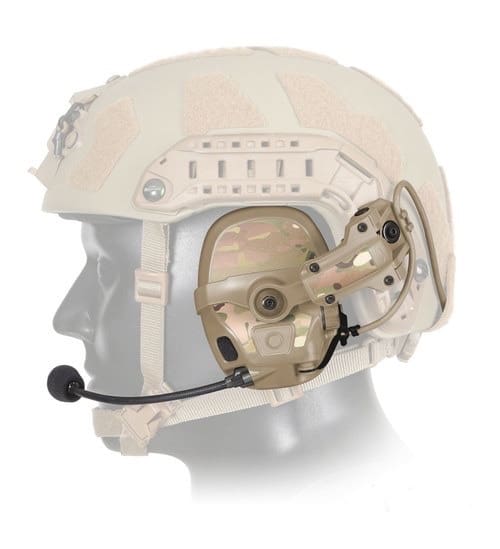
A limited number of the FAST SF Carbon helmets were also recently purchased by the FBI.
As you might guess, people approach me all the time about working out, diets, losing weight, getting in shape, etc. These are people I know: friends, family, students and many more I don’t know; Those who have read my book, or my posts here on SSD. 9 times out of 10 they want to get my take on the latest diet, supplement or workout routine they’ve heard of, or want to relate their recent experience with the same. What they always want to talk (ask) about is the specifics: calories, carbs, sets, reps, mileage, etc. Which frankly, is the last thing I want to discuss, as I always start off with questions; What is their long-term goal, their work schedule, their present routine and diet? Any heath issues or injuries? Then I try to bring this all around to how they’re thinking about this. While people are normally very happy to discuss themselves (as we all are), you can tell that they’re aren’t really listening when I start talking about how to get their mind around this in the right way, as they normally will bring it quickly back to sets, reps, meals, fat, protein, etc., etc. I’ve had this conversation 100’s of times and they’re all so similar that I can probably provide both sides of it myself.
You know, human nature is a funny thing. It’s immensely powerful and yet completely unbiased. Meaning that it will work equally as well for, or against you and while most people will say they get that, they don’t seem to really understand it. Certainly not to the degree required to harness it for long term success. I’ve found that much of this disconnect is really due to a lack of listening. Learning to listen and hear what’s important vs. what is the loudest, newest or false, is something we all can have a hard time with. About 40 years ago my first squad leader told me. “Roarkey (he always called me that to break my balls), if you’re ever going to be a good Marine, you need to learn how to tell the difference between fly shit and pepper”. When I asked how? He said; “Get the mud out of your ears numb nuts, pay attention and listen” In other words, BS and the truth often look a lot alike and to tell the difference you need to pay close attention and that means listening. The fact is all the information you could ever need about losing weight and getting in shape is out there, but to make it work is secondary to how you think about it. That is the main thing I try to get people to listen too, with mixed results.
Right about this time last year, my son were in Nepal making the Everest Base Camp Trek. It was a great experience and everything we hoped it would be. Besides the unbelievable scenery and the physical challenge of hiking above 17,000 ft, another great part was the people. We met people from all over the world there making the trek, a few professional climbers going for the summit and a lot of locals. However, my most memorable meeting I had was with a retired Sherpa guide. His name was Aang Dawa and he is now retired from climbing and owns a “Tea House”. Which is their name for a hostel. His place was our first stop, just up the trail from the airport at Luka. When we were having dinner, I noticed there were a lot of pictures of a local Sherpa on the summit of Everest and some of the other high peaks of the Himalayas. There was also several framed newspaper and magazine articles about him. I asked our guide who he was and he told us that he was the owner. Later than night he came and sat down with us. He was in his 40’s, with the typical bright smile, cheerful nature and muscular build of a Sherpa. His English was very good and for the next few hours (over a few strong local beers) we had one of the most interesting conversations I’ve ever had.
His story was that he started as a porter in his early teens, then later attended the famous Nepal mountaineering school in Katmandu and progressed to become a high-altitude guide, (that’s where the good money is). Over the next 20 years he guided for numerous international climb teams to summit all the major Himalayan high peaks, including making Everest 3X. He didn’t boast about his climbing, but spoke like how a man who lays bricks for a living, would tell you how he built a retaining wall, very matter of fact. Even so, he related many very interesting stories about his experiences. As a PT guy, I questioned him a lot about the physical aspect of climbing. He was a firm believer that actual climbing and hiking at altitude were the best physical training for climbing, not cross training. However, interestingly enough he had a lot more to say about the mental aspect of climbing. He had quite a few stories about people who had mental breakdowns during climbs and why some people could handle the extremes of weather and altitude while others couldn’t. Some of his stories were dark humor. Like the time he helped lead a group of climbers to the summit of Everest and once there, one climber told him, “He wasn’t going down”. That he just wanted to make top and now that he had, he just wanted to stay and die there. Aang told the guy he must come down alive, or as his guide he wouldn’t get paid and his family needed the money. So he convinced him to come down as a favor to him. After going lower, the man regained his senses and thanked him for bringing him down, as he had obviously been suffering from altitude sickness and was out of his head.
The other story that I found very interesting was the time that he was hired by the British military to take a group of about a dozen “special forces”, (what ever that means; SAS, Royal Marines?) to the summit of Everest. They were climbing from the Tibet side and they were a huge party of people that brought in all the best equipment. He said they were all big, tough looking and motivated guys, but in the end, not a single member made the summit after a few hard weeks of trying. Why? I asked, bad weather? No, not really. They wouldn’t listen about the proper process of acclimatization for altitude, they all wanted to rush through it. They all got sick and had to turn around, some having to be airlifted out. I asked if that surprised him? No, he said, they didn’t follow the most important rule of climbing. What is that? You must “listen to the mountain”. The mountain will always tell you when it’s ok to come to the top and when it’s time to stay down. The mountain has rules and you have to listen and they didn’t listen. They thought because they were tough guys they could climb on their terms, not the mountain’s. But they were lucky though, they didn’t die. Many people who don’t listen, do die. It’s the most important thing about climbing. You can learn everything about ropes, equipment, weather and be in the best of condition, but if you don’t listen you may die. At the very least you won’t be successful. I asked him what did they say after nobody made it to the top? Not much, but he added with a grin, they brought “barrels full of money”, so it was a very good trip, they had good food too.
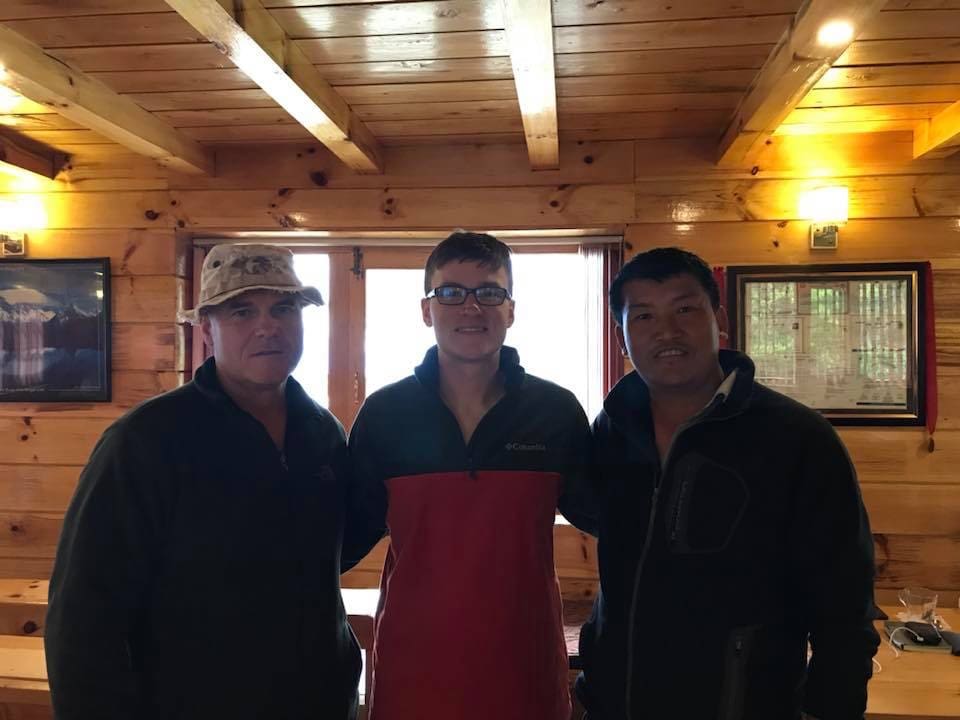 That’s Aang Dawa on the right, me on the left, my son in the center.
That’s Aang Dawa on the right, me on the left, my son in the center.
It was the best night we had on our trip and his advice left an impression on me. It’s a funny thing about many people I’ve met from poor countries. While they don’t have everything that we have here. They don’t have the education, the medical, and certainly not the economic opportunity. They often do have an intuitive feeling about life and living that sometimes seems much more dialed in than ours. I’ve always thought that’s because as they don’t have all the material distractions we have, they actually tend to think about basic things more than we do. In any case I found it to be sound advice and not just related to climbing.
I think his advice can apply to many areas of our lives and trying to stay in shape is no exception. Getting in shape and losing weight has rules that you just can’t avoid. You can’t rush it, go in half ass and expect success. You have to listen to those rules, or you are sure to fail. I have learned over the years that your mental state is much more important for success in this area than money, technology or routines. I say all this as I’m convinced that listening to the right guidance and getting the rights thoughts in your head will get you there. A lot of things in life are hard. Getting and staying in shape for many people is very hard, so hard they think it may be impossible, it’s not. Not when you listen for and find the right guidance. You then need listen to yourself and trust that you have the will to do it. Because you do, if you listen.
I’m off to climb Mt. Rainer in a few weeks and will probably have something to share with you about it next month.
Till then: “Be safe always, be good when you can”.
Semper Fi
MGunz

BTW I thought his advice was so good I had it tattooed on my calf so I wouldn’t forget.
“Listen to the Mountain” in Nepali
FORT MEADE, Md. — U.S. military allies have been embedded into the Army’s eight cross-functional teams to strengthen the force against potential adversaries, Army leaders told lawmakers Tuesday.

Lt. Gen. James Richardson said representatives of these allied nations will also be stationed with Army Futures Command, headquartered in Austin, Texas. The general, who serves as the command’s deputy commander, did not specify which countries but said both officers and non-commissioned officers have already joined some cross-functional teams.
Allied cooperation will be crucial for future success on the battlefield, Richardson said during a Senate Armed Services Committee hearing.
“Interoperability is huge for our Army,” he said. “We fight as a coalition and we fight as joint partners and it’s been one of [AFC Commander Gen. John Murray’s] top priorities to ensure that we’re interoperable, not only across the joint force, but our coalition forces.”
Joint exercises such as Balikatan and Cobra Gold help foster good relations between partner nations. Balikatan is an annual military exercise between U.S. and Philippine forces. In February the Army participated in the annual Cobra Gold exercise, a joint-combined venture that includes Thailand, Singapore and Japan.
Additionally, Randall Schriver, assistant defense secretary for Indo-Pacific Security Affairs, told an audience at the Center for Strategic and International Studies Wednesday that the U.S. would like to strengthen relations and enhance military ties with Vietnam.
“[Interoperability] is one of the three tenets of both the National Defense Strategy and our Army strategy,” said Lt. Gen. James Pasquarette, Army G-8, emphasizing the importance of allies and partners.
“So we have a robust exercise program in both Europe and [the Indo-Pacific] our two focus theaters that help us deepen those bonds,” he added. “We believe it’s making a big difference and we believe in the future. It’s our way of countering the two threats we’ve been talking about here today, Russia and China.”
The Army created the newly-formed Futures Command to streamline the acquisition process and to lead the Army’s modernization efforts. In addition to placing partner nation representatives within the command, the Army hopes to reach small businesses and innovators.
Last fall, the service stood up the Army Applications Laboratory in Austin, which focuses on helping deliver innovative technologies from small businesses and young developers.
“[They’re] bringing technologies that we otherwise would not have seen,” Richardson said.
With Army representatives stationed within “incubator” hubs in Austin, the Army plans to encourage contributions to its modernization efforts from small businesses, said AFC leaders.
Story by Joe Lacdan, Army News Service
Photos by SGT Alvin Reeves and DVIDS
NEWINGTON, N.H., (April 10, 2019) – SIG SAUER, Inc. congratulates Team SIG professional shooters Daniel Horner and Lena Miculek for their National Championship titles at the 2019 USPSA SIG SAUER Multi-Gun Nationals held April 3rd – 7th at the Universal Shooting Academy in Frostproof, Florida. The 2019 USPSA SIG SAUER Multi-Gun Nationals had 180 individuals competing through twelve stages scored equally for speed and accuracy ranging from 5 to 425 yards.
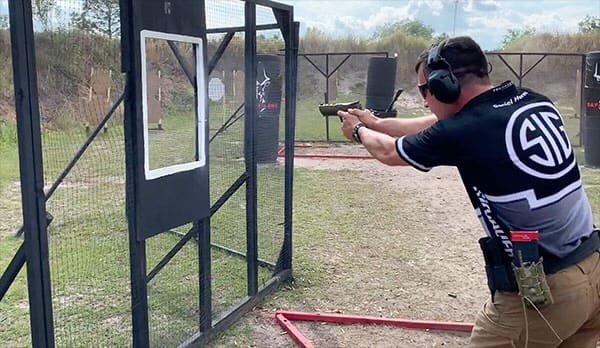
To claim the Tactical Optics Division National Champion title, Team SIG professional shooter Daniel Horner used the SIG SAUER P320X5 pistol with SIG SAUER Match Elite Pistol 9mm Competition Ammunition for the pistol stages. Horner used the SIG SAUER M400 rifle with a SIG SAUER Electro-Optics TANGO6 1-6x24mm riflescope, SIG SAUER Match Elite 223 Rem, FMJ Elite Ball 223 Rem, and Varmint Hunting 223 Rem long range ammunitions for the rifle stages of the competition. For long range shooting Horner utilized the SIG SAUER Electro-Optics KILO2400 Rangefinder. This is Horner’s 11th USPSA Multi-Gun Nationals Title. Horner had previously competed as a soldier representing the U.S. Army’s Marksmanship Unit (USAMU).
“This win was particularly special to me because it was my first time competing at the USPSA Multi-Gun Nationals as a member of Team SIG,” began Horner. “Heading into the three day competition I had two goals, first to bring home a win for Team SIG, and second to showcase the elite performance of the wide range of SIG SAUER products. I am pleased that I achieved both goals and I will continue to prove through competition that SIG SAUER is the leader in the industry for firearms, optics, and ammunition.”
To claim the Ladies Open Division National Champion title, Team SIG professional shooter Lena Miculek used the SIG SAUER P320X5 with a ROMEO1 Optic, and SIG SAUER Match Elite Pistol 9mm Competition Ammunition for the pistol stages. Miculek used the SIG SAUER M400 rifle with a ROMEO3 optic, and Match Elite 223 Rem, FMJ Elite Ball 223 Rem, and Varmint Hunting 223 Rem ammunitions for the rifle stages of the competition. For long range shooting Miculek also utilized the SIG SAUER Electro-Optics KILO2400 Rangefinder.
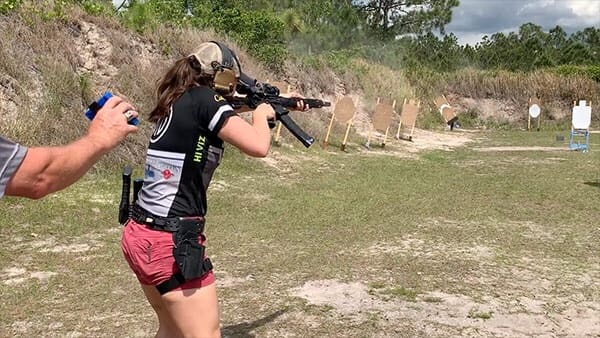
“For my first competition of the year I couldn’t be happier with my results,” added Miculek. “Winning the Ladies Open Division title at the USPSA Multi-Gun Nationals was one of the goals I had sent for myself this season, and it comes as a result of dedication to my training and the reliability, accuracy, and performance of my SIG SAUER equipment.”
Tom Taylor, Chief Marketing Officer and Executive Vice President, Commercial Sales, SIG SAUER, Inc., continued, “Daniel and Lena’s results at the 2019 USPSA SIG SAUER Multi-Gun Nationals are truly outstanding, and both of them are competing at the top of their game for Team SIG. Throughout the competition they put SIG products through the paces under intense circumstances and proved they can go the distance and win.”
The SIG SAUER Electro-Optics TANGO6 1-6x24mm riflescope, ROMEO1, ROMEO3, KILO2400 Rangefinder, and SIG SAUER Ammunition used by Horner and Miculek in the 2019 USPSA SIG SAUER Multi-Gun Nationals are available for purchase online at sigsauer.com/store.
INVISIO has received another order for communication equipment for the U.S. Army’s Security Force Assistance Brigades (SFAB). The order is valued approximately SEK 26 million. Deliveries will take place during April – September 2019.
The order is an important reference in the modernization of communication equipment that is ongoing globally within defense and security. INVISIO’s systems address the initiative by ensuring a good hearing protection while allowing the user to communicate with maintained situational awareness in extreme environments.
“It is outstanding to see the US Army equipping additional SFABs with our communication systems. It proves that they have confidence in us and that our systems meet the communication needs of users in mission-critical environments. For military and security forces, hearing, communication and situational awareness play a crucial role for safety and operational capacity,” said Lars Højgård Hansen, CEO of INVISIO.
The Security Force Assistance Brigades are specialized units whose core mission is to conduct advise-and-assist operations with allied and partner nations. Soldiers in SFABs are highly trained and will help brigade combat teams build readiness by freeing them from advisory missions.
April 15th is Tax Day, so we’re having a SALE!

Save when you purchase a gift card. Purchase a $100 Gift Card, Get $10 Free! Purchase a $200 Gift Card, Get $25 Free!
Save up to 20% Off or more on all AERO Precision April 13th through April 16th.

Save up to 20% Off SB Tactical April 12th through April 22nd



You won’t believe our prices on Sig Sauer Optics & Airguns! For example SIG ROMEO5 for $133.99 or SIG MCX Air Rifle for $140.95

Magpul PMAG D-50s In-Stock Now, while supplies last!